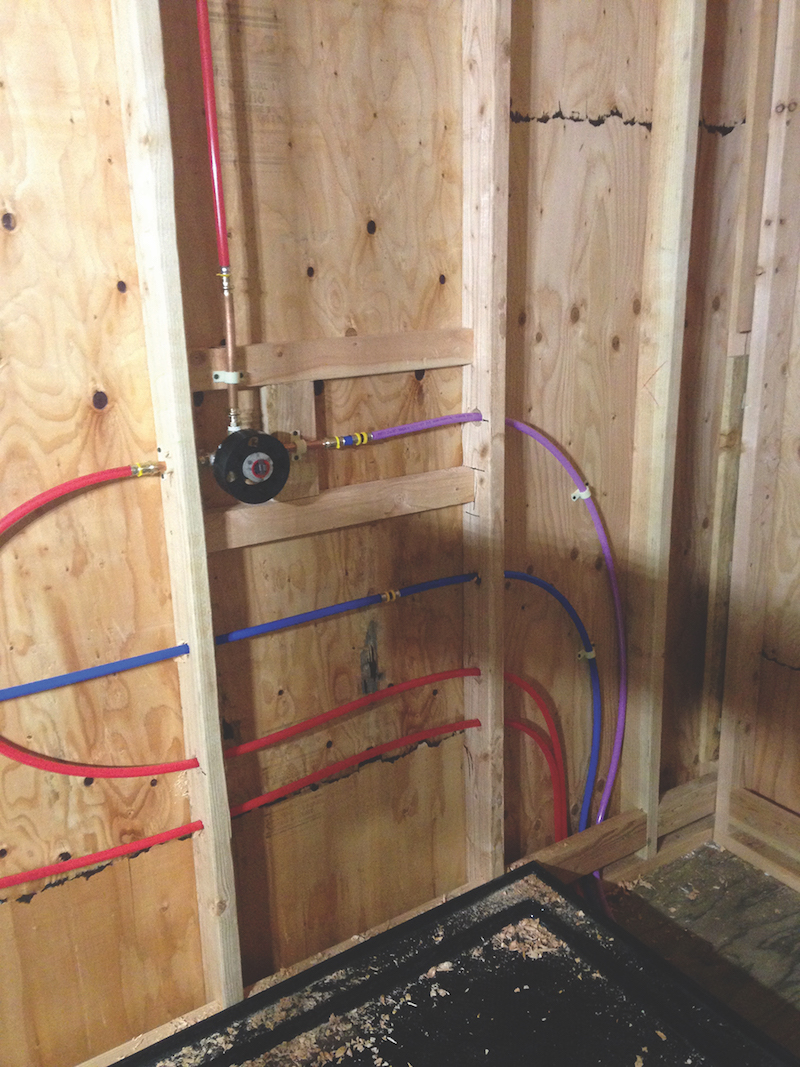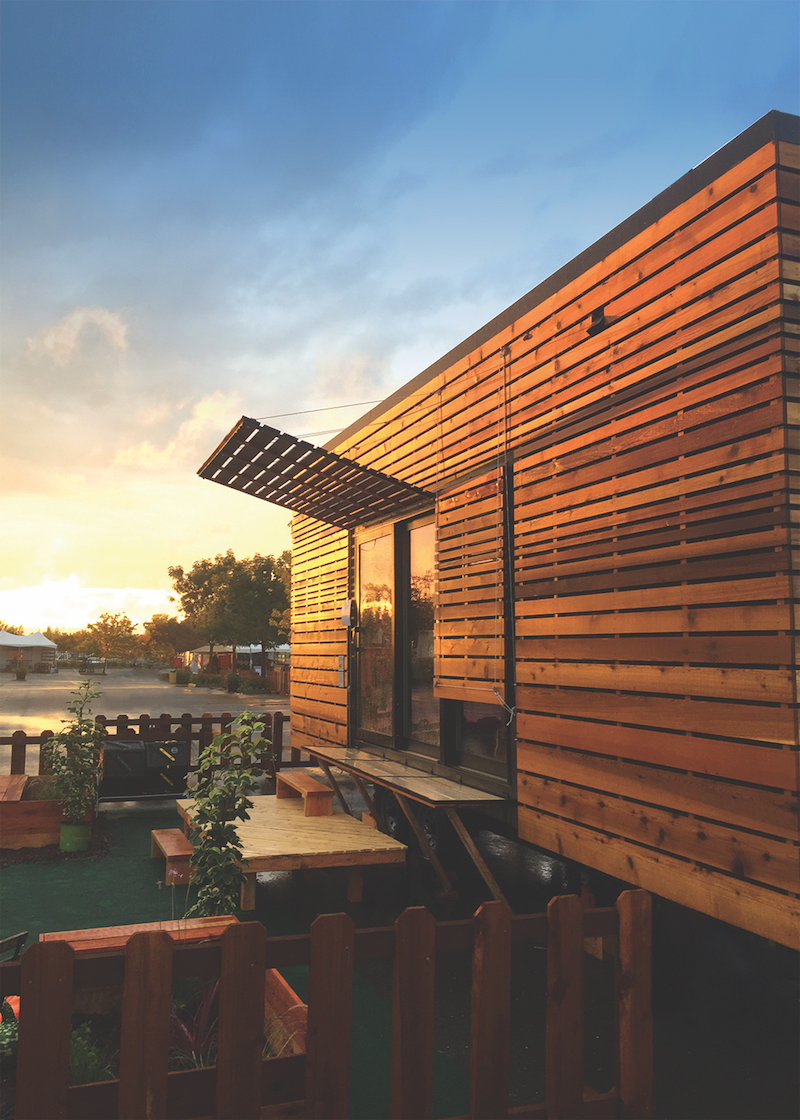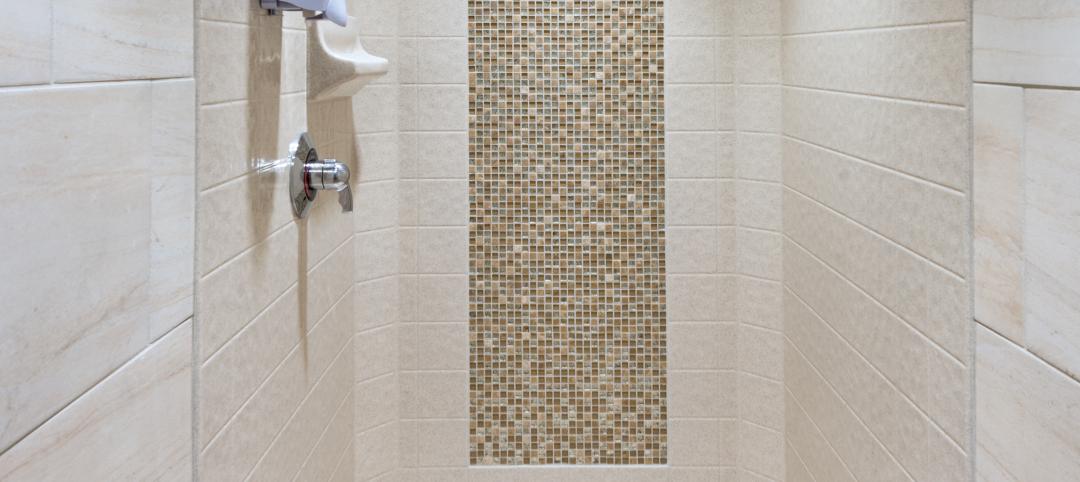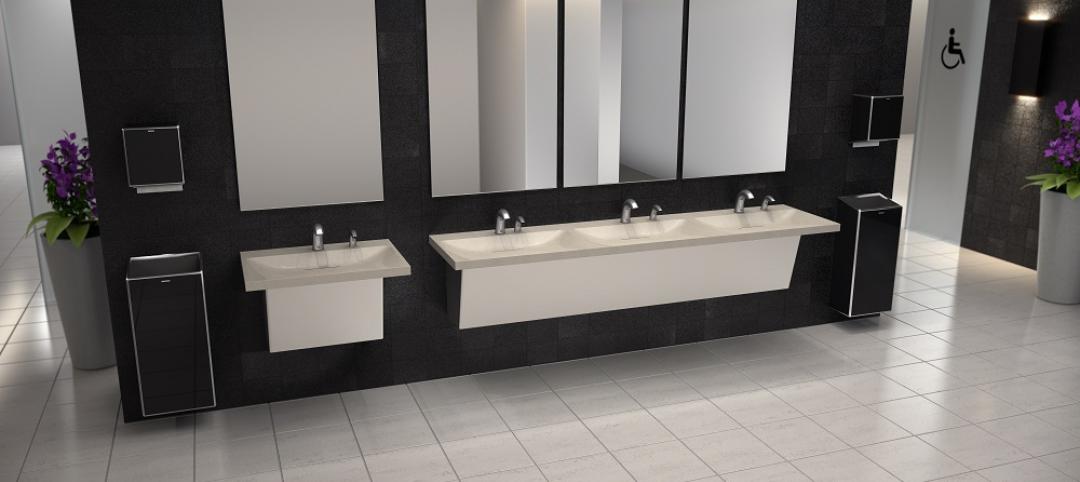The tiny-house craze is huge – TV shows, blogs, daily articles in the news and websites are dedicated to the trend. Now Viega has a hand in it, too – contributing to a tiny-house competition in California. The team from University of California, Berkeley, utilized different Viega products and finished second in the competition, pulling in some other awards as well.
Viega is a member of the Center for the Built Environment (CBE), a UC Berkeley-sponsored scientific research partner, so the collaboration on the tiny house grew from that relationship. Students from the CBE formed a team to compete in the tiny-house building competition, and Viega came on board as a sponsor of the entry, providing products, loaning tools and giving some advice to what became a very successful venture.
The Berkeley team wanted their tiny house to be completely off the grid, able to produce its own energy and use as little water as possible. With efficiency in mind, the team worked to create a system to recycle as much water as they could for a second use.
Laney Siegner, in her third year of the Energy and Resources group PhD program at Berkeley, was one of the project managers and led the design of the water and wastewater systems.
 The team used the Viega PureFlow system.
The team used the Viega PureFlow system.
“Our concept was to pump the greywater to planter boxes on the back end of the trailer/house and then filter it through the planter boxes, through a UV disinfection light, and then recollect it as filtered greywater,” Siegner said. “Our highly ambitious goal was to get the water back to potable, but we couldn’t quite achieve that. We did a lot of testing on it, and there was still a little turbidity, but we determined it was okay for several uses.”
The team made good use of the Viega PureFlow system, installing PureFlow PEX in red and blue for hot and cold potable water, and also purple for reclaimed water, as well as PureFlow Press Polymer fittings. The PEX in ½" and ¾" was utilized on the project, and the team was also able to use a ManaBloc in the mechanical room. They chose to cover it with clear plastic, so the plumbing is still visible in the completed home.
The PureFlow PEX products played a big role in the whole water system, with lots of tubing used not only for hot and cold water output, but to move the greywater through the recycling system.
The idea impressed the judges of the competition, and Berkeley’s team won the award for water conservation, as well as for overall sustainability.
“Viega’s support was essential and extremely important for the success of our project,” said Caroline Karmann, a PhD candidate at Berkeley who served as architect for the tiny house. “The high quality of Viega’s products has been a key aspect in the functionality of our water systems, which is unusual and complex since we are off-grid. We were profoundly lucky to have this collaboration with Viega.”
Read more about this project here.
Related Stories
Sponsored | Plumbing | Aug 4, 2017
Shower threshold height – a better shower from the ground up!
Getting the right threshold height for your code-compliant shower installation is critical. In this blog post, we will consider how shower and shower-pan threshold heights work and why they are important for successfully meeting accessibility code requirements.
Sponsored | Plumbing | Aug 2, 2017
The new commercial restroom relies on durability and style
Architects and designers should look for well-designed products that can stand up to the daily demands of such frequented spaces.
Sponsored | HVAC | Apr 6, 2017
Viega ProPress shines in SolarCity construction
Buffalo will be the first city to produce the first-ever true solar roof – a roofing product with solar panels built in.
Architects | Apr 4, 2017
Architect Howard Elkus dies at 78
Cofounder of Elkus Manfredi Architects, his career spanned five decades, and included a spectrum of major design projects.
Sponsored | Plumbing | Feb 22, 2017
Press pipe-joining provides valuable savings on potable water installation at Mercy Health – West Hospital
Nelson Stark selected Viega ProPress for the plumbing installation because the system is flameless and can be installed simultaneously with other utilities since there’s no need for welding or grooving equipment.
Sponsored | Plumbing | Jul 19, 2016
Getting out of the 1960s: New thinking needed for Locker Room Showers













